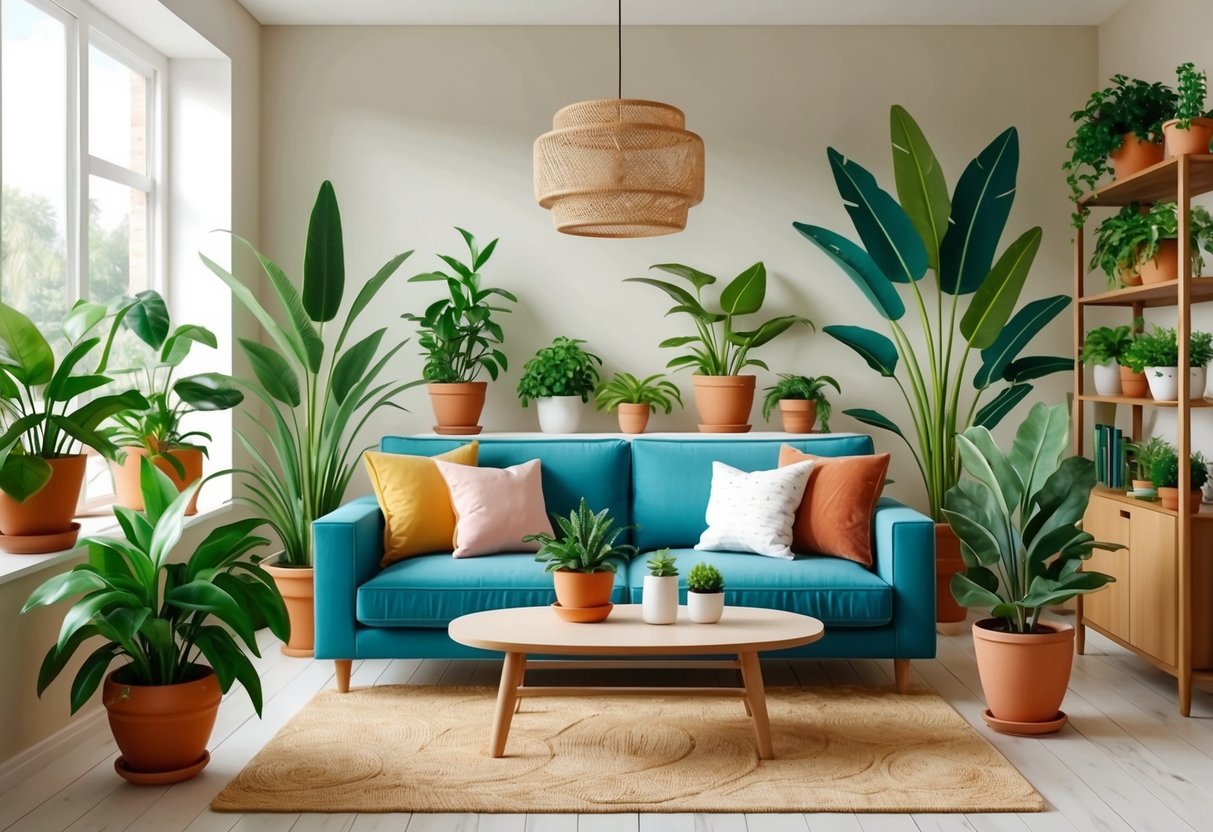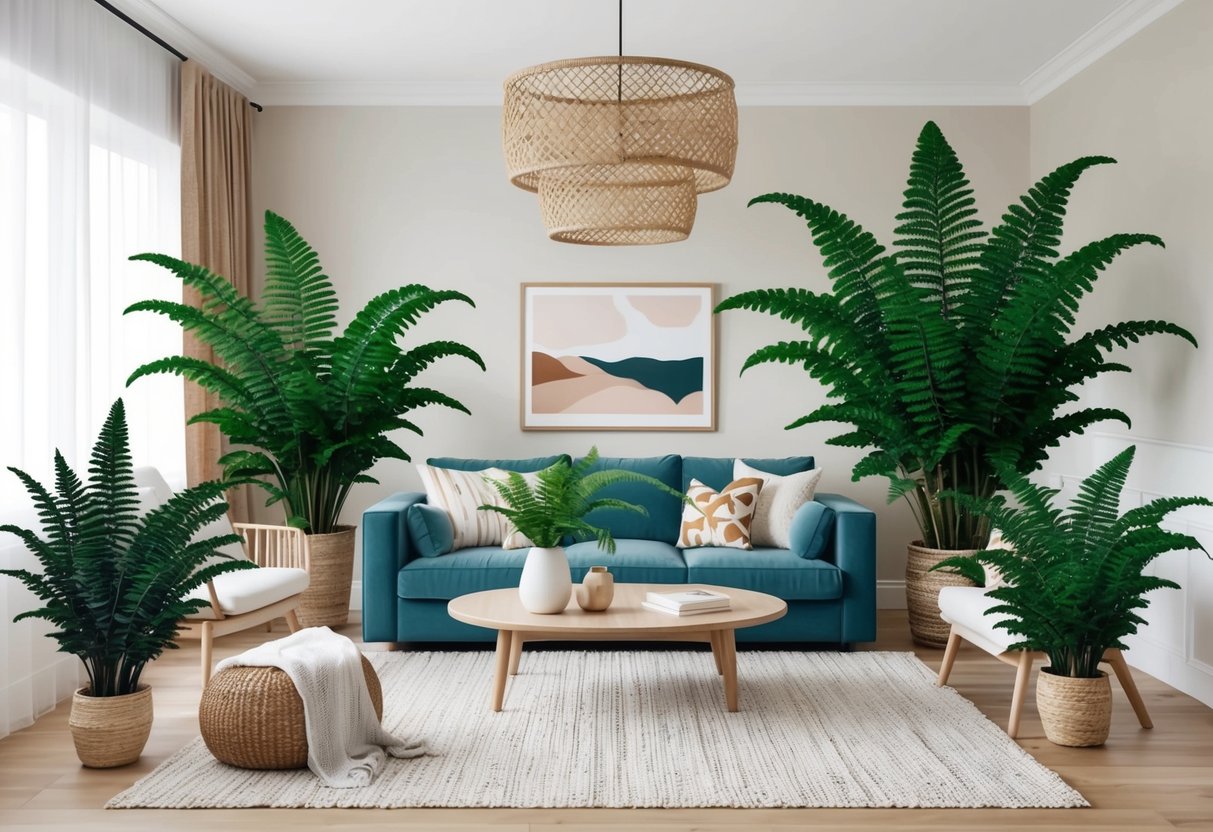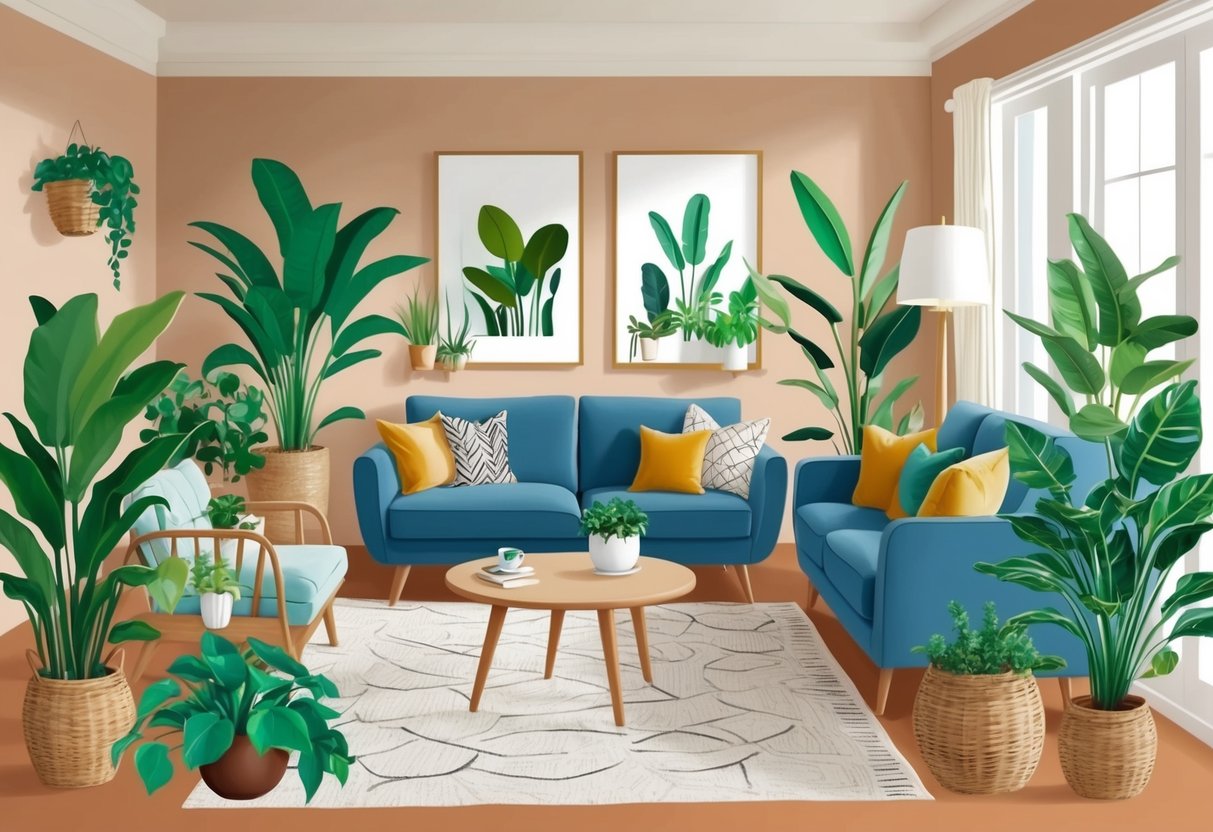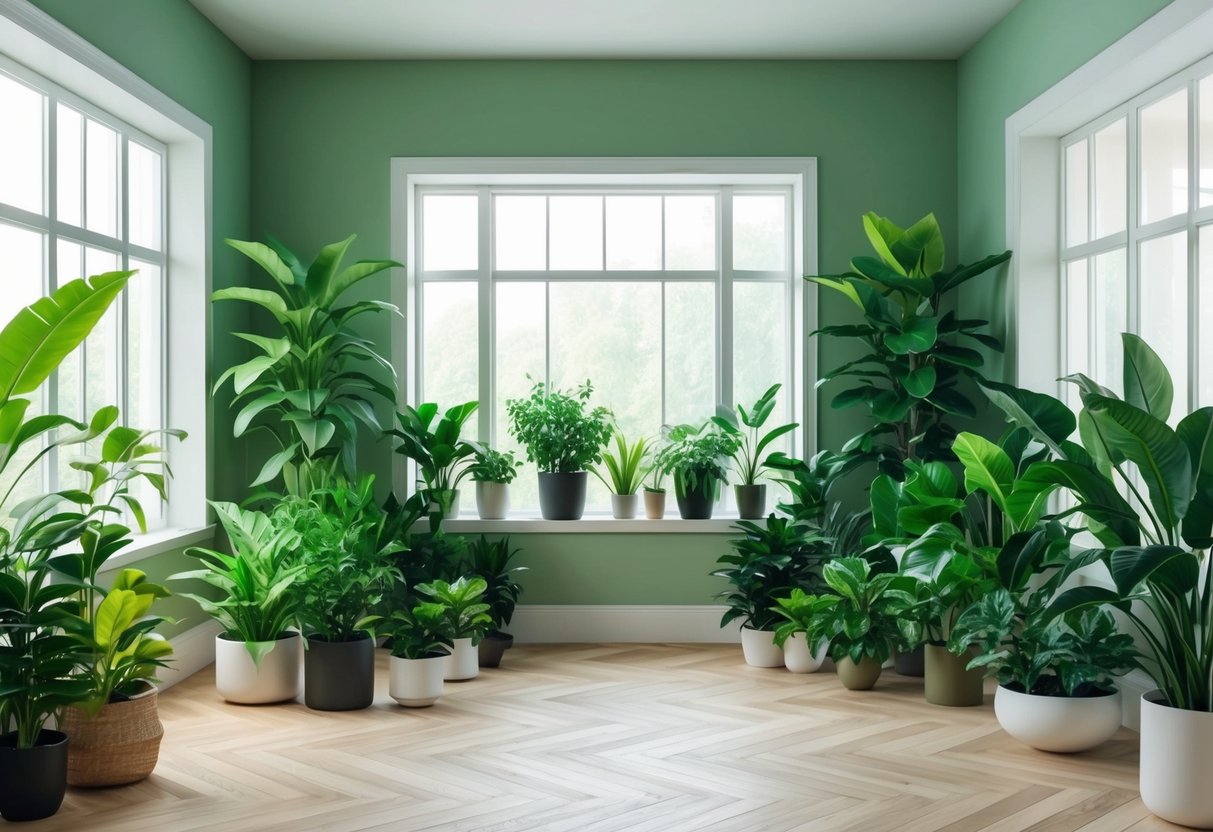
Ferns and Their Role in Cleaner Indoor Air

Ferns, especially those suited for indoor conditions, are considered top performers among air-purifying plants. Their unique abilities to filter toxins and manageable care requirements make them valuable for supporting both air quality and stress reduction in indoor settings.
Best Types of Indoor Ferns
Indoor ferns are appreciated for more than their appearance—they excel at reducing volatile organic compounds and improving air purity. Common varieties include the Boston fern (Nephrolepis exaltata), Maidenhair fern (Adiantum), and Bird’s Nest fern (Asplenium nidus).
Each type helps trap dust and absorb chemicals such as formaldehyde, a frequent indoor pollutant.
- Boston fern: Widely recognized for its air-cleaning efficiency.
- Maidenhair fern: Adaptable but prefers high humidity.
- Bird’s Nest fern: Tolerant of lower light, making it suitable for various rooms.
Placing multiple fern species throughout a home may enhance the removal of indoor toxins and introduce a calming element to the environment. Use of diverse ferns can also reduce the stress commonly linked to poor air quality and dry air.
Nephrolepis: The Boston Fern
The Boston fern (Nephrolepis exaltata) is a standout among air-purifying plants, frequently recommended in studies such as the NASA Clean Air Study for its superior ability to filter indoor toxins. This fern specializes in absorbing formaldehyde and other airborne chemicals commonly found in homes with new flooring, paint, or pressed-wood furniture.
Boston ferns benefit indoor spaces by adding moisture to dry air, which can make breathing easier and reduce irritation caused by low humidity. They thrive best in indirect light and with high humidity, but require slightly more attention than other houseplants due to their watering needs as described by Seventh Generation.
Beyond its air-cleaning reputation, the Boston fern’s feathery foliage brings a gentle, soothing aesthetic to living areas and offices, supporting relaxation and a more pleasant indoor environment.
Selecting the Right Plant for Your Space

The best indoor plants for clean air and stress relief will fit both the environmental conditions and care routines of each space. Matching houseplants to light, humidity, and maintenance preferences is essential for keeping both the plants and their owners happy and healthy.
Assessing Light and Humidity Needs
Light and humidity are two of the most important factors when choosing indoor plants. Some houseplants, like the snake plant or ZZ plant, tolerate low light and adapt well to most indoor environments, making them popular for offices and darker rooms.
On the other hand, species such as spider plants and English ivy need bright, indirect sunlight to thrive and show their best air-purifying abilities. Humidity also deserves attention.
Peace lilies and ferns do especially well with higher humidity, making them a good choice for kitchens or bathrooms. If a room stays dry due to air conditioning or heating, consider using a pebble tray or small humidifier to create a more suitable microclimate for these plants.
Carefully matching each plant’s native growing conditions to their placement indoors ensures they remain healthy and can efficiently clean indoor air. For those needing guidance, the NASA list of best indoor plants provides a helpful starting point.
Choosing Low-Maintenance Species
Low-maintenance houseplants allow even busy individuals to enjoy the benefits of indoor greenery. Plants such as the snake plant, ZZ plant, and pothos are popular because they need only occasional watering and tolerate diverse temperature and humidity ranges.
This resilience makes them ideal for beginners or anyone with limited time for daily care. A helpful list for easy-care options includes:
- Snake Plant (Sansevieria)
- ZZ Plant (Zamioculcas zamiifolia)
- Pothos (Epipremnum aureum)
- Spider Plant (Chlorophytum comosum)
These species can handle irregular watering routines and adapt to both high and low humidity, making them suitable for most indoor spaces. Their hardiness, paired with their proven ability to filter toxins, makes them some of the best indoor plants for health and stress relief.
Opting for these houseplants ensures lasting benefits without heavy maintenance demands.
Tips for Maximizing the Benefits of Indoor Plants

Proper placement and routine care can significantly boost the effectiveness of air-purifying plants. Ensuring the right conditions for each species helps maximize both air quality improvements and stress relief.
Optimal Plant Placement
Placing air-purifying plants within close proximity to people enhances their benefits. According to recommendations, keeping plants within your “breathing zone,” which is about 6 to 8 square feet around frequently used spaces, is ideal for air filtration and stress reduction.
This means keeping indoor plants on desks, next to beds, or near seating areas where time is spent.
Consider these placement tips:
- Position plants with air-cleaning properties, like spider plants and peace lilies, in bedrooms or home offices.
- Arrange multiple smaller plants together for a stronger purifying effect and a pleasing visual grouping.
- Avoid overcrowded corners or spots with poor air circulation, as this can reduce the effectiveness of air filtration.
Making sure plants are exposed to appropriate natural light is vital. Too much direct sunlight may damage delicate leaves, while too little can hinder growth and air-purifying abilities.
Placing them near windows with indirect light often yields the best results, especially for species sensitive to harsh sunlight.
Caring for Air-Purifying Species
Consistent care is crucial for maintaining healthy indoor plants and supporting their air-cleaning functions. Most common air-purifying plants require moderate watering, allowing the soil to dry slightly between waterings to prevent root rot.
Overwatering is one of the most frequent causes of plant decline. It’s important to dust leaves regularly, as dust buildup can block pores and reduce the plant’s ability to absorb pollutants.
Wiping foliage gently with a damp cloth every few weeks is effective.
Key care steps include:
- Fertilize air-purifying plant species such as snake plants and pothos during their growing season.
- Monitor for pests like spider mites or scale, treating infestations promptly with natural or approved methods.
Rotate plants regularly so all sides receive even exposure to light, which encourages uniform growth. Plants like the rubber plant and peace lily may also benefit from occasional pruning to remove dead or yellowing leaves.